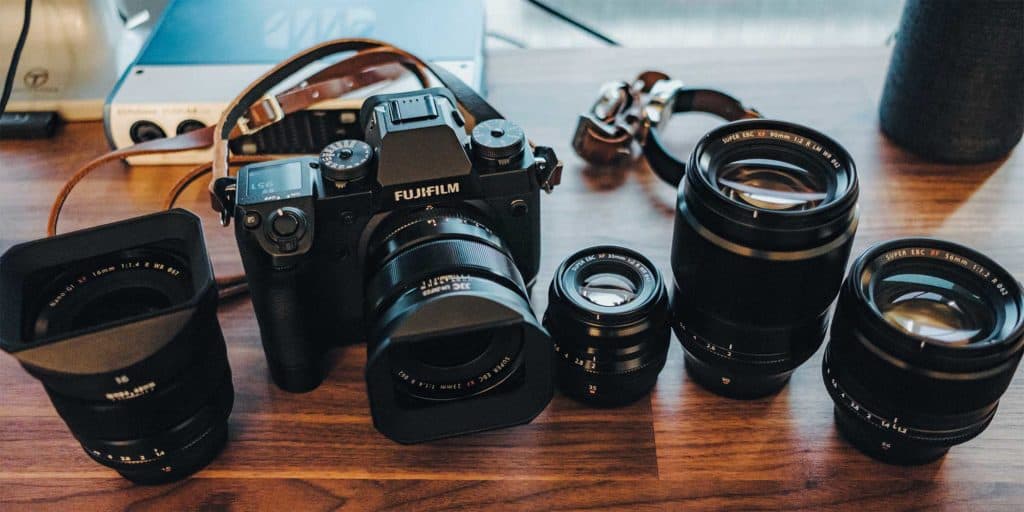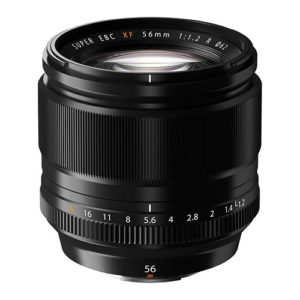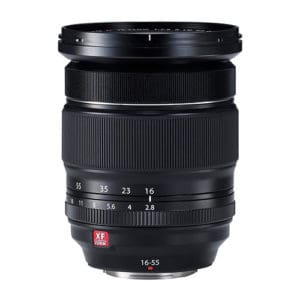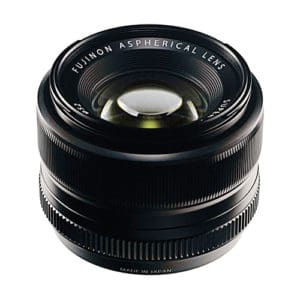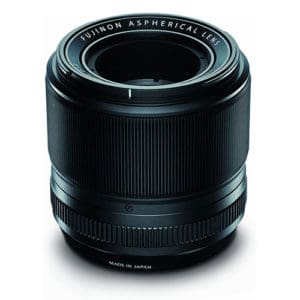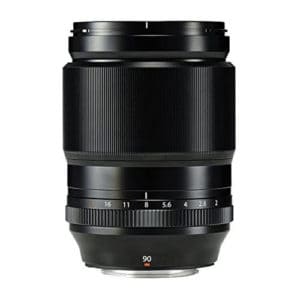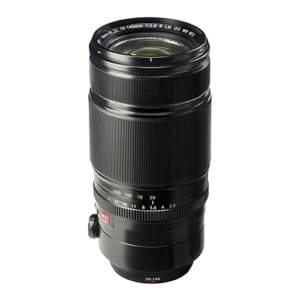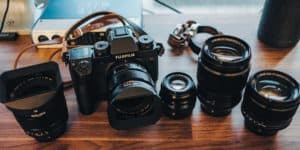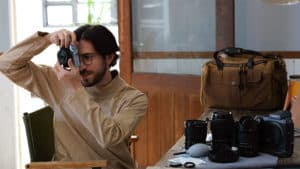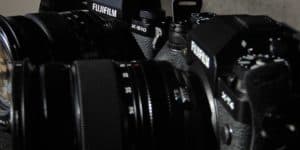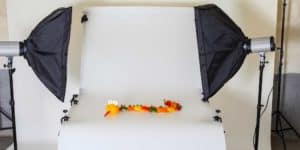Although in practice a portrait could be taken with just about any lens, the fact is that certain pieces of glass lend themselves much better to this genre of photography than others.
But as the Fujinon range has continued to expand at an impressive rate over the last few years, it’s become increasingly difficult to work out which are the best Fuji X-mount lenses for portrait photography available.
In this guide I break down the pros and cons of some of the best portrait lenses out there today for the Fuji X-mount system, before looking at the most important points to consider when deciding which Fuji portrait lens will be most suited to your own photography.
Read on for the full briefing!
While the Fuji X-mount range now includes several lenses at various focal lengths that are all ideal for shooting portraits, if I were pushed to choose the absolute best Fuji X-mount lens for portraiture out there right now, it would probably be the 56mm f/1.2 R.
In general it’s just a great lens. But offering a point of view equivalent to 84mm on full frame, a fast maximum aperture, and excellent optics, it also checks all the boxes as a classic portrait lens too.
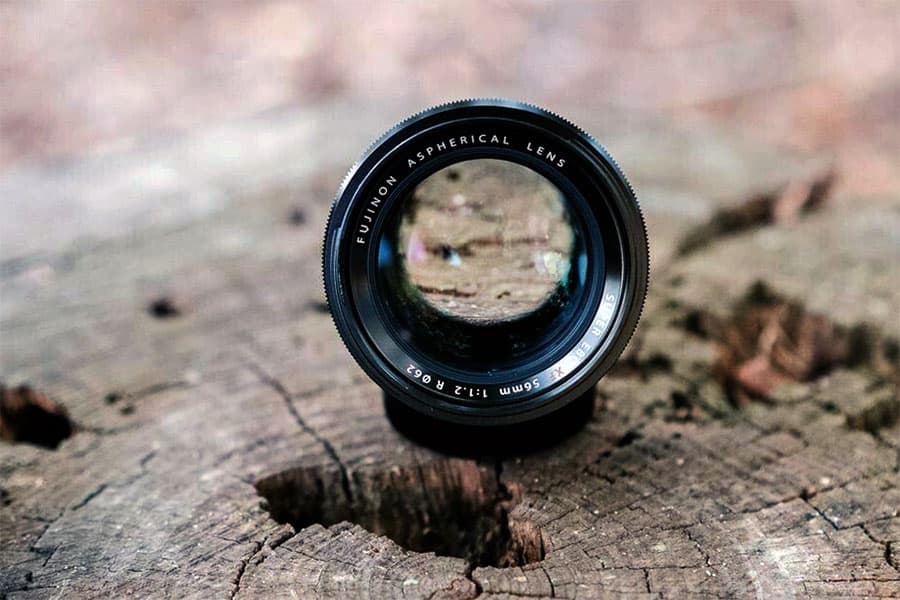
Image quality with the 56mm f/1.2 is simply beautiful.
Whether it’s in terms of sharpness, contrast, or bokeh, portraits shot on this lens just look fantastic.
Detail at the center of the frame is very well defined – even when shooting wide open – and remains nearly as crisp towards the corners.
Out of focus rendering is very attractive too. Sure, if we’re going to split hairs, there’s some slight “edging” on bokeh balls. But really, this degree of obsession over bokeh is not something that photographers ever worried about before the advent of YouTube lens reviews; the need for ever more “content” leading to previously unknown levels of geekery.
Meanwhile, in the real world, this lens is capable of producing stunning portraits.
End of discussion.
Just how good those portraits are will depend more on your skills as a photographer than on some minor technical issue effecting background details.
True, this is not a 100% perfect lens.
For a start I’m not a huge fan of focus-by-wire in general, and this is by no means the best example of that system either.
Accordingly I tend to avoid focusing manually and stick to using autofocus whenever possible.
Thankfully, though, this is nearly always possible, as the lens performs brilliantly on this front.
Indeed AF is consistently quick, precise, and even able to deal with quite challenging lighting situations.
Before you rush off to buy this lens, though, keep in mind that the purchase price is quite steep.
It’s also important to mention that there’s no OIS, and nor is the lens weather sealed.
Nonetheless, the Fujinon 56mm f/1.2 is strongly constructed from high-grade materials, and is clearly built to last.
So you may never need another portrait lens. And as this is an optically excellent product, that really wouldn’t be a bad thing at all.
The Fujinon 16-55mm f/2.8 is perhaps not a “portrait lens” by any standard definition of the term.
It is, however, a great lens for shooting portraits with. And that’s good enough for me.
To be clear, with a range equivalent to something like 24-80mm on full frame, the longer end of the 16-55mm f/2.8’s zoom settings puts us firmly in portrait lens territory.
What’s less typical of a portrait lens is the fact that it also covers a whole bunch of much wider focal lengths.
Personally, though, I don’t consider that to be a handicap.

In fact, for anyone who enjoys shooting environmental portraits, the possibility of also being able to work at a focal length closer to that of a standard lens (e.g. a 50mm equivalent) will likely be very appealing.
Of course, what you gain in flexibility when compared to, say, the 56mm f/1.2 (above), you lose in terms of maximum aperture.
Nonetheless, for those who may feel a little stifled by only being able to shoot portraits at around 80mm, or who may also want a lens that doubles up for other genres of photography, f/2.8 shouldn’t be sniffed at.
Similarly, while zooms are often frowned upon for inferior optics, the 16-55mm performs admirably in this department; displaying excellent sharpness at the center of the image.
True, corner detail is much less well defined. But since when did portrait photographers care about sharpness at the edge of the frame anyway?
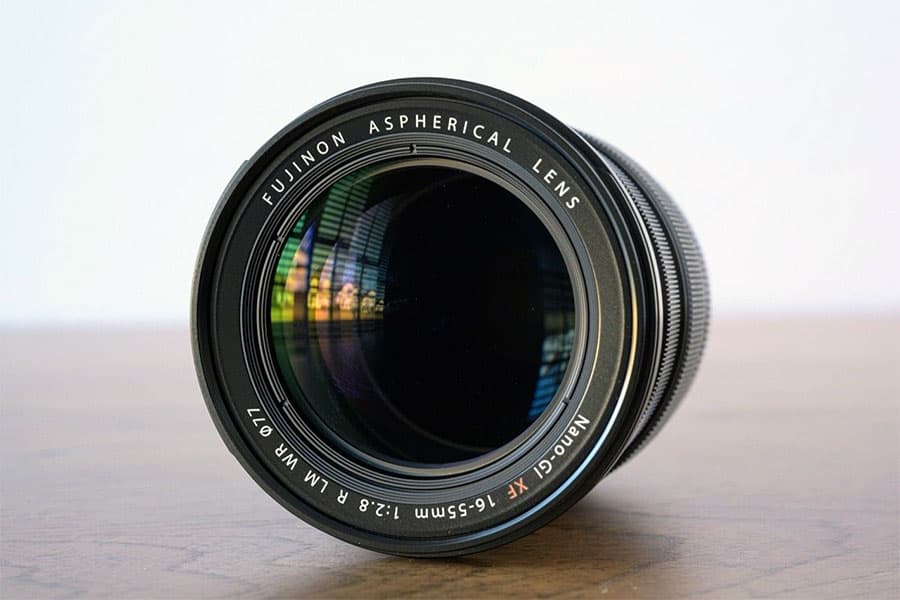
Less positively, there’s a little barrel distortion.
But when it comes to portraits that’s hardly the disaster it might be for, say, an architectural photographer for example.
In any case distortion is easily corrected at the post-processing stage. Otherwise though, the optics of this lens really are very good, and both color rendition and bokeh are very pleasing to the eye too.
Although silent autofocus isn’t nearly as important to portrait photographers as it is for videographers, it’s nonetheless good to know that your subject won’t be distracted by annoying AF motor noise when using this lens; it’s very quiet.
More importantly though, AF is also very fast and accurate. And although manual focus is of course “by wire”, the action isn’t at all bad.
Sturdy construction and weather sealing complete the picture.
The oldest of Fuji’s two excellent 35mm options, the 35mm f/1.4 R makes our list of the best Fuji X-mount lenses for portraiture largely as a result of its excellent optics and covetable f/1.4 maximum aperture.
Again, this is not a “portrait lens” in the sense of providing just the right framing for flattering headshots.
Instead, with an equivalent focal length of 52mm on a full frame camera, this is more like your faithful old “nifty fifty.”
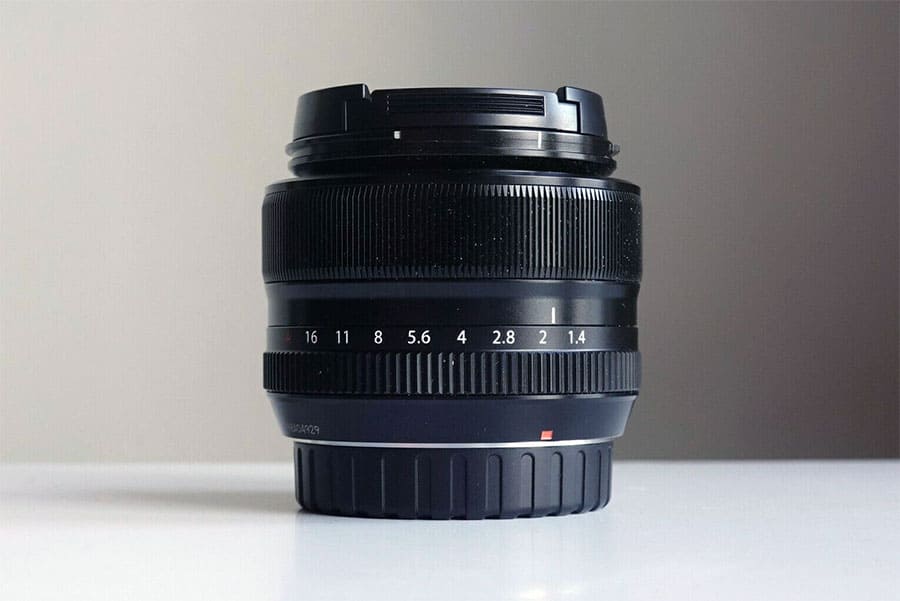
The fact is, though, that while a classic 85mm portrait lens will indeed produce a pleasing perspective – one that your subject will likely thank you for – this doesn’t always translate into the best possible solution for shooting portraits.
Indeed, flattery of the subject is only one of several criteria we might judge a portrait by.
For example, if you also value the narrative possibilities of portraiture, you’ll likely enjoy switching to a wider point of view from time to time.
Well here it is. Pair this with the 56mm f/1.2 R (above) and you’re basically the king of portraiture.
The lens is sharp as a razor in the center of the frame. And displays only a very delicate degree of softness at the corners when wide open (and almost none when closed down a stop or two).
Color and contrast are great, too.
Meanwhile the fast maximum aperture results in decent bokeh, while also helping to create a good degree of separation between subject and background – despite the relatively short focal length.
Autofocus is quick and precise. The fact that the AF motor also generates a degree of audible noise is perhaps not ideal, but hardly a major drawback on a portrait lens.
More worrisome for some photographers, though, will be the lack of OIS and weather sealing.
Nonetheless, for those who can live without these luxuries, there really is a lot here to like.
Like the look of my top recommended X-mount lens for portraits – the 56mm f/1.2 – but less keen on the asking price?
The 60mm f/2.4 R might be just what you’re looking for. This will be especially true if you also value the ability to get in really close, as the 60mm is also a (kind of) macro lens.
OK, it’s not true macro (i.e. it doesn’t offer a ratio of 1:1). But it gets close enough. And so can you; certainly much closer than you can get to the subject with the 56mm lens.
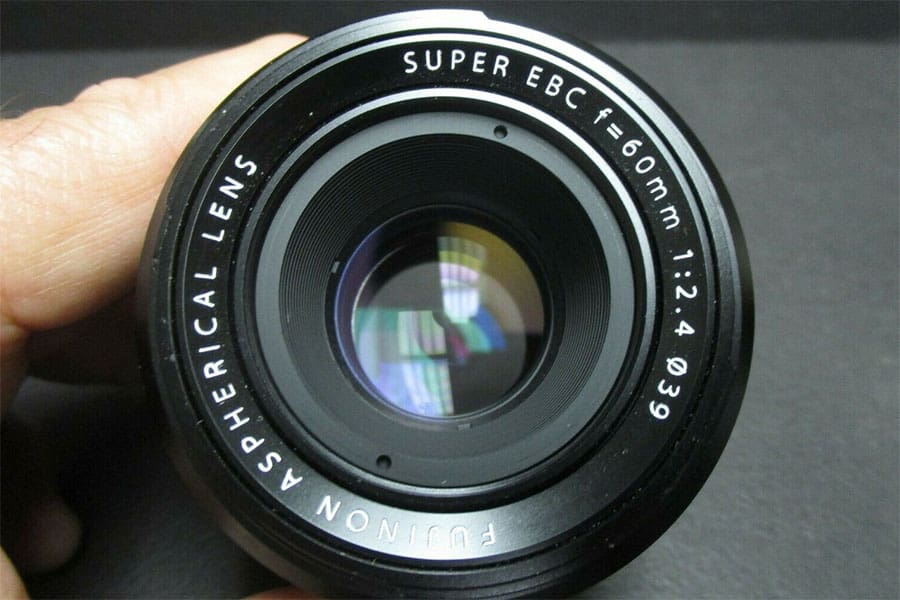
What’s more, although we’re only talking about a few millimeters of difference, some photographers will no doubt prefer the extra degree of tightness when framing with the 60mm.
It’s also way smaller and lighter than either the 56mm or the 80mm macro option.
Really, though, as a portrait photographer, you would go for the 60mm over the 56mm largely because it comes at a much cheaper price than the 56mm.
And yet offers optical performance almost approaching that of its more costly sibling.
While overall the 56mmm is just a touch sharper than the 60mm when zooming in on files, in real life viewing situations there’s not a huge amount to choose between them. And who is ever going to zoom in on your images other than you anyway?
Color rendition is very good; in fact it’s perhaps a touch more natural looking than with the 56mm.
And while the 56mm can achieve a greater degree of blur owing to the wider maximum aperture, shoot with the two lenses at the same settings and you’ll find that out-of-focus rendering is actually smoother on the 60mm, with more rounded bokeh balls and no “edging.”
Yes, autofocus is a little slower than with the 56mm.
But that’s rarely a major issue for portrait photographers anyway. And just like the 56mm lens, the 60mm also lacks OIS.
Overall though, the 60mm f/2.4 R makes for a fantastic budget portrait lens. Recommended!
Are the 56mm and 60mm options not doing it for you in terms of framing?
Perhaps the Fujinon 90mm f/2 R LM WR will be more to your liking?
Offering a field of view comparable to 137mm on full frame, this is the lens to go for if you want cleanly blurred backgrounds with maximum separation from the subject.
Not only does the 90mm offer a considerably longer focal length than any of the other options we’ve looked at so far, but it also comes with an impressively fast maximum aperture – meaning that backgrounds can’t help be anything but a bokehlicious swirl.
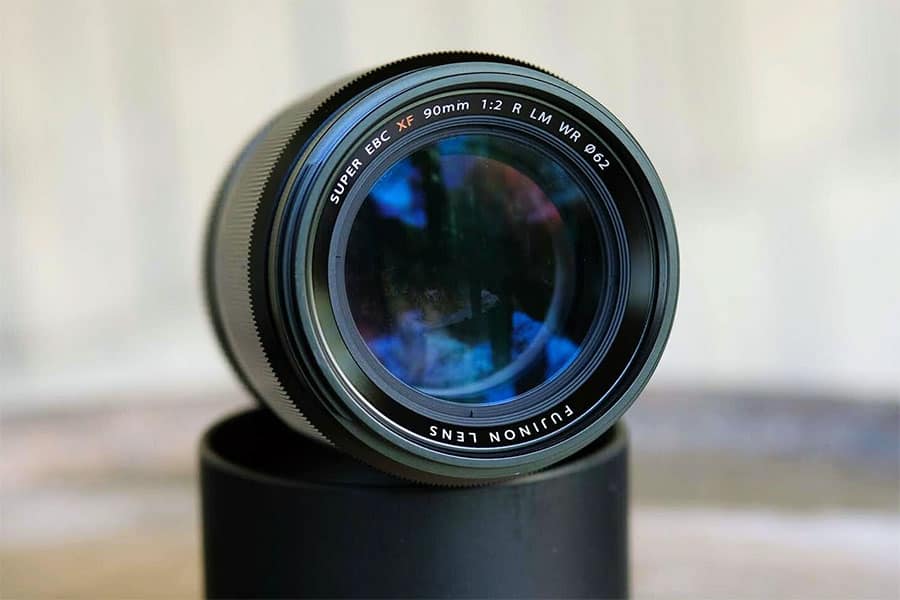
Optically, everything is as it should be: color, contrast, and sharpness are all excellent.
Meanwhile the quality of build is very reassuring; an impression that’s further reinforced by the knowledge that the lens comes fully weather sealed.
Fast to focus, particularly when tracking a moving subject, this is the kind of lens you want when shooting animated headshots – say of a speaker at a conference or other public event.
It would also do a great job of shooting streetstyle images; allowing you to capture both tight, posed portraits and full length fit shots on the fly.
The only negative thing I can mention about the 90mm f/2 is that it lacks OIS.
But then again, so do the majority of Fuji’s X-mount lenses. otherwise, though, this is likely the best Fuji X-mount portrait lens for those who like a closer crop.
A single lens to cover all the classic portrait photography bases? It’s undoubtedly the Fujinon 50-140mm f/2.8.
This is a top quality telephoto zoom lens offering a point of view ranging from classic head and shoulders portraits through to tight headshots with the background fully blurred out.
In fact a 50-140mm focal length roughly coincides with the classic 70-200mm zoom on full frame (actually, its exact full frame equivalent is closer to 76-213mm).
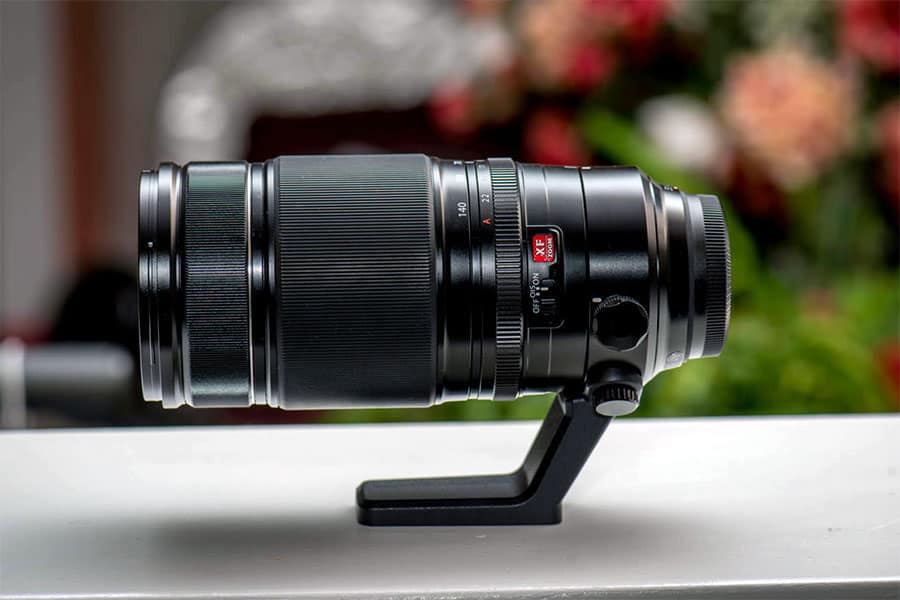
Optically the 50-140mm is truly impressive.
Indeed it’s undoubtedly among the sharpest of Fuji’s current offerings.
Bokeh, too, is lovely. Particularly when the lens is used at the longer end of its zoom range, at which point backgrounds become a painterly blur.
True, flare and ghosting can be quite pronounced when shooting into the light. But this is only to be expected of a lens of this focal length.
Just keep in mind that, as this is one of Fuji’s premium line of zooms, the 50-140mm costs almost as much as a top-end full frame lens from Canon or Nikon; cheap it ain’t.
Still, you get what you pay for.
And in this case, on top of great optics, that means a solid metal alloy build and weather sealing.
Oh, and lest we forget, the 50-140mm also comes with the rarest of features among Fuji X-mount lenses; optical image stabilization.
Hurrah!
As if the 56mm f/1.2 (at the top of my list) wasn’t already impressive enough when it comes to portraiture, Fujifilm went and made an even more bokehtastic version of it.
But is the Fujinon 56mm f/1.2 R APD worth the (considerable) extra investment?
Well, clearly the answer is no in my opinion, otherwise it would be sitting at the top of this guide instead of the regular 56mm f/1.2 offering.
But opinions differ. And there’s little in photography that’s more subjective than bokeh, so I’m including the 56mm APD here for those who might value the addition of the apodization filter.
And what is an apodization filter exactly?
Well, effectively an apodization filter is like a gradated neutral density filter that helps to create smoother bokeh.
While this can make for nicer backgrounds, the effect is particularly noticeable when there are out of focus objects in the foreground – lights for example – creating bokeh balls.
Without getting too technical, those balls lose their hard edges and instead fade softly away. It’s a look that will appeal to some photographers while striking others as a little bit kitsch.
As it is, though, if the 56mm f/1.2 R APD isn’t higher up my list of the best Fuji X-mount lenses for portraiture, it’s more because in this particular case the effect of the apodization filter seems to be a little too weak to justify the much higher purchase price.
That, and the fact that the APD element doesn’t work with phase detection AF, thus slowing down autofocus.
What’s more, it has a negative effect on the lens’s light gathering abilities too.
When put like that, you can probably see why this lens didn’t make it to the top spot in the end.
True, on some lenses an apodization filter can reduce the amount of light falling on the sensor by a couple of stops.
And thankfully in this case it’s considerably less; not even a stop.
But as mentioned, the APD filter doesn’t appear to be doing a great deal to improve the quality of the image either, so even this minor drop in light seems like an unnecessary compromise.
To be clear, the bokeh on this lens is very nice. It’s just that the difference in out-of-focus rendering when compared with the regular version of this lens is simply not as strong as you might hope.
There definitely is a difference, and it will be obvious to anyone who does a side-by-side comparison of images created by the two lenses.
But the extra degree of smoothness may not be sufficient to justify the extra cost for anybody but the most fanatical of bokeh obsessives.
If that’s you, however, don’t hesitate, as this is nonetheless a great little lens. Indeed, the optics are every bit as impressive as the non-APD version and performance on all other fronts seems entirely comparable.
The Fuji Portait Photographer's Lens Guide
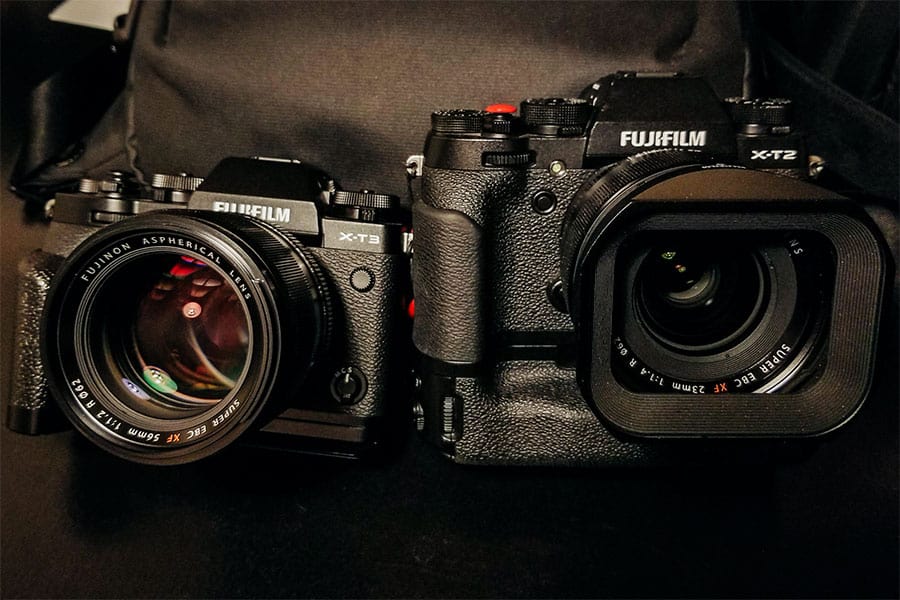
Focal Length
When people talk about a “portrait lens” they generally don’t mean simply any lens that is useful for taking portraits, but specifically one with a focal length of around 80-110mm.
Typically also one with a fast aperture.
There are good reasons for this. Firstly, photos taken at this focal length will have a perspective that is flattering for its subjects.
Contrast this with a wide angle lens, for example, which will tend to exaggerate the size of things close to the camera while making those further away look even smaller.
If what’s close is a person’s nose, and what’s further away is the rest of their face, this will not result in a flattering image.
From about 80mm onwards, however, perspective tends to be flattened, making facial features look better proportioned and, ultimately, more attractive.
Another advantage of using a lens of this focal length for portraits is that – all other things being equal – it will produce a more blurred background.
If your goal in shooting portraits is to isolate your subject against the background, so that the focus (both literally and figuratively) is only on their face and little else, an 80mm lens is the way to go.
However, if you look at your favorite portraits from throughout the history of photography you will likely notice that a great many of them were produced using a lens that falls well outside of this focal range.
Indeed, people can still look great when photographed on a 50mm lens.
To be sure, a flattering photo will be more likely to satisfy the sitter. But when it comes to portraiture, keeping the subject happy isn’t the only legitimate goal.
Indeed, in some cases the unflattering and almost cartoony effect created by a wide angle lens might be just what the photo calls for (and perhaps even what the sitter deserves!).
So yes, many photographers shoot great portraits using lenses wider than 80mm.
And something like a 50mm lens will be particularly effective when you want to show more of the background in focus, exploring the relationship between the subject and their environment.
Finally, successful portraits can also be shot on lenses of a focal lenght longer than 110mm.
However, the higher degree of magnification will necessarily mean standing at some distance from the subject; not necessarily the best way of creating an intimate rapport with them.
Maximum Aperture
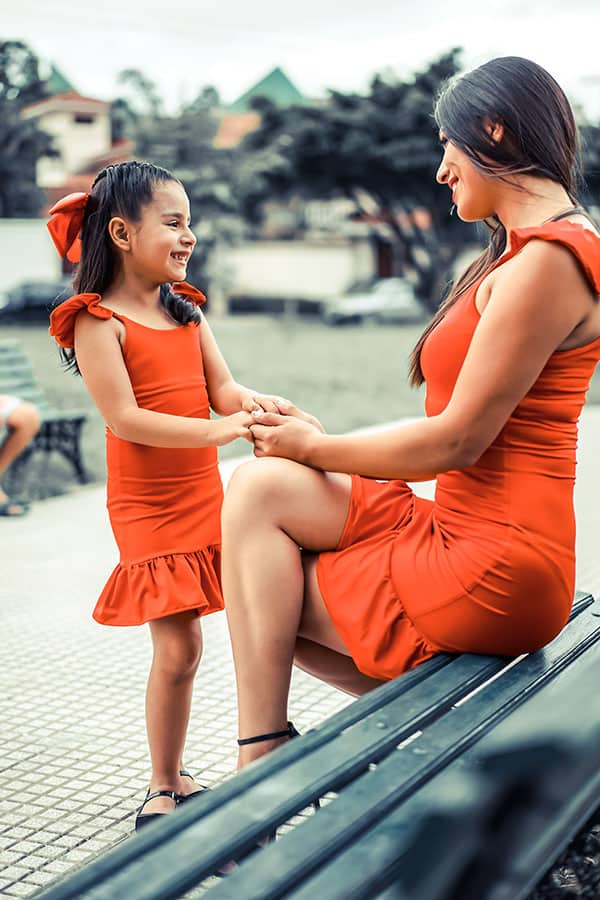
A lens with a wide maximum aperture can be hugely advantageous in portraiture, helping to throw the background out of focus to a greater degree – thus separating the subject from any distractions in front of or behind them.
Of course, not every portrait needs to be a 90mm bokehfest.
Indeed, many portrait photographers prefer to use a slightly shorter lens – and with the aperture stopped down a little way – so as to show more of the location in the shot.
But even here we shouldn’t ignore the advantage of using a lens with a relatively fast maximum aperture.
That’s because some of the best conditions for daylight portraiture are to be found either very early or very late in the day, when light levels also happens to be at their weakest.
An extra stop or two of light can make the difference between being able to continue shooting into the blue hour, and having to pack up and go home just when things were starting to get interesting.
Bokeh
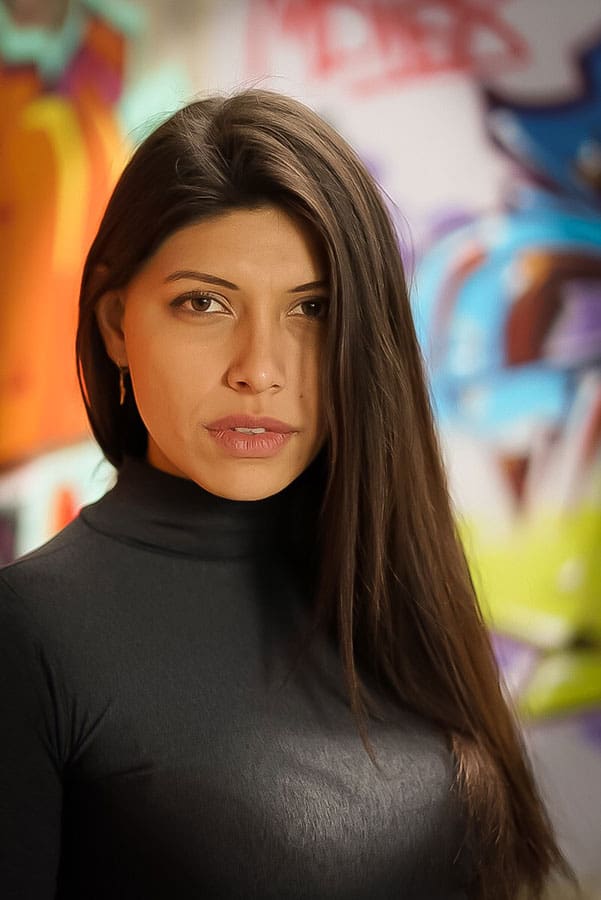
Bokeh refers to the look of out of focus areas of a photograph.
However, the word doesn’t so much mean the degree to which areas are out of focus, but more the quality of that rendering. I.e. whether out of focus areas are pleasingly smooth, or distractingly busy.
Obviously, the more out-of-focus areas a photo contains, and the greater the degree to which they are defocused, the more noticeable bokeh becomes.
So if you do go for a Fuji X-mount lens with a very wide maximum aperture, you’ll probably want to give some consideration to the bokeh it produces, as you’ll likely be seeing a lot of it in your photos.
When choosing a lens, there are two main things to understand about bokeh. Firstly, although a number of technical factors are more likely to produce nice looking bokeh, it’s impossible to tell from a spec sheet alone what the bokeh of a particular lens will look like.
The only way to know is to try the lens out for yourself.
In any case, bokeh is highly subjective. This means that while some people might rave about the bokeh of a certain lens, an equal number of people are just as likely to remain indifferent to, or even unimpressed, by it.
In any case, contrary to what many photography bloggers and influencers might have you believe, bokeh really isn’t the be all and end all of photography – not even portrait photography. With that said, though, it’s certainly worth keeping bokeh in mind when choosing a lens.
Ultimately it’s very simple; if you like the results produced by a particular lens, go for it.
If you don’t, keep looking until you do.
Sharpness
Modern optics – even those found in relatively cheap camera lenses – are generally very efficient.
As a result they tend to do great job of capturing images with a high degree of fidelity.
That is, with much of the image sharply focused and displaying excellent contrast and detail.
That being the case, it’s probably not worth worrying too much about image sharpness today.
To be sure, there is some very obvious variation in this department between the best and worst Fuji X-mount lenses on the market.
But it would be highly unusual for a Fuji lens to totally fail to deliver in this area.
In any case, when it comes to portraiture, it’s worth considering for a moment just how important image sharpness really is for you.
A portrait that renders a subject’s penetrating eyes so sharp that they appear almost real can certainly be very impressive.
Yet at times modern lenses almost seem to provide too much sharpness; revealing every facial blemish and imperfection in graphic detail.
Just how much sharpness you demand from a lens, then, will in part depend on which philosophical school of portrait photography you adhere to. Do you strive to record your subject’s likeness with almost forensic precision?
Or are you more about creating an impressionistic image of your sitter? One that emphasizes mood and emotion over cold, hard facts?
Zooms vs Primes
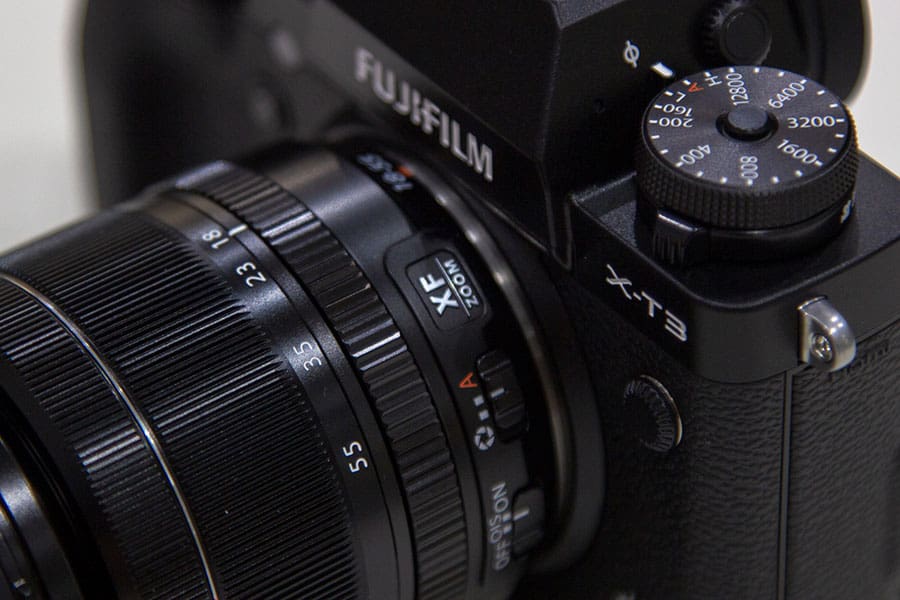
Compared to primes, zooms offer more for the money regarding choice of focal length.
In fact, depending on the exact spec, a zoom can be like having anything up to thee or four popular lenses in one – plus all the focal lengths in between.
Less positively, the image quality provided by a zoom can sometimes be a little less impressive than that of a comparable prime.
Finally, it can be difficult to find zooms featuring constant fast apertures.
And when you do find one, you can expect to pay handsomely for it.
Prime lenses, on the other hand, tend to offer more for the money in terms of image quality and maximum aperture.
But, on the downside, you’re stuck with only a single focal length.
Personally I love shooting portraits on a sharp, fast, prime lens.
But if I find myself with only a zoom to hand, I won’t let this stop me from doing the best job I can.
Whether anyone will notice a real difference in terms of the final results seems highly unlikely to me.
Indeed, if my portraits suck, it’s probably more a sign that I need to work harder on directing the model and composing the shot than it is reason to blame my lens collection.
In short, you can produce great (and, just as equally, really bad) portraits on either zooms or prime lenses.
Weigh up the pros and cons; make an informed decision about which works best for you; then forget about it and get out there and shoot.
Image Stabilization
Image stabilization is undoubtedly a fantastic invention, permitting blur-free handheld shots at shutter speeds that would have been unthinkable even just a few years ago.
The fact is, though, that until a few years ago photographers still managed to produce great portraits without the help of OIS.
That’s not an argument against using modern technology where it can be of help to you in your photography.
Instead it’s more a way of saying, “don’t feel so bad if you don’t have lenses with image stabilization, as you can still shoot great photographs all the same”.
The reason why I say this is simply because very few Fuji X-mount lenses currently feature OIS.
So whether you like it or not, chances are that most of the lenses in your collection will probably lack this feature anyway.
I have included an OIS lens in this guide, though. And it happens to be one that is particularly well-suited to portraiture.
So assuming it falls within your budget, this could be a great option for budding portrait photographers with unsteady hands.
List of X-mount Fuji cameras
- Fujifilm X-A1
- Fujifilm X-A2
- Fujifilm X-A3
- Fujifilm X-A5
- Fujifilm X-A7
- Fujifilm X-A10
- Fujifilm X-A20
- Fujifilm X-E1
- Fujifilm X-E2
- Fujifilm X-E2s
- Fujifilm X-E3
- Fujifilm X-H1
- Fujifilm X-M1
- Fujifilm X-Pro1
- Fujifilm X-Pro2
- Fujifilm X-Pro3
- Fujifilm X-T1
- Fujifilm X-T2
- Fujifilm X-T3
- Fujifilm X-T4
- Fujifilm X-T10
- Fujifilm X-T20
- Fujifilm X-T30
- Fujifilm X-T100
- Fujifilm X-T200
Useful Links
Final Thoughts
In some respects, portrait photography is a very specific niche.
After all, there’s not a great deal of room to maneuver within the definition of the genre; typically a portrait means a photo of a person, and that’s that.
Beyond this essential criteria, though, portrait photographers are actually quite free to experiment.
And although certain lenses are often labeled as “portrait lenses,” in reality you could potentially shoot a great portrait on almost any kind of lens.
Which is not to say that your choice of lens doesn’t matter. On the contrary, a change of lens can radically alter the final effect.
But what it does mean is that, if you plan on shooting portraits, you shouldn’t necessarily just buy the first fast 85mm prime lens you come across.
Instead there are a whole range of considerations you’ll want to think about before deciding which lens will work best for you.
Hopefully by reading my guide to the best Fuji X-mount lenses for portrait photography you are now armed with the knowledge to make an informed choice on your own.
But I’d also love to know what you think of my recommendations.
Would you choose totally different lenses for shooting portraits with Fuji X-mount cameras?
I’d love to hear your opinions in the comments section below!

